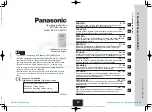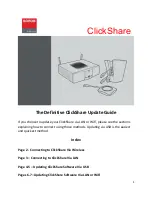
7
GG-H2-EC
Operation
Start-Up
Before applying power, make a final check of all wiring
for continuity, shorts, grounds, etc. It is usually best
to disconnect external alarms and other equipment
from the sensor until the initial start-up procedures
are completed.
After power-up, allow at least 1 hour for the system to
stabilize before testing the sensors. Because sensors
are normally located at a distance from the main unit,
the test time required and accuracy of the response
checks will be improved if two people perform the
start-up procedures and use radio contact.
Start-Up Test:
1) One person exposes each sensor to hydrogen test
gas.
2) The second person stays at the control unit to
determine that each sensor, when exposed to the
gas, is connected to the proper input and responds,
causing appropriate alarm functions.
Calibration
The GG-H2 Sensor comes factory calibrated and
should require only minimal adjustments after
installation. There are two pots on the preamp that
are used for calibration.
Note: Never measure sensor output in mA .
Always use mVDC or VDC voltmeter settings .
Zero Calibration:
After the unit is installed and has
been powered up for a minimum of 12 hours, the unit
can be zero calibrated by the following:
• Be sure the unit is in clean air.
• Adjust the zero pot until the sensor outputs 40 mV
from Test [-] to Test [+] (see
Figure 2
).
Span Calibration:
The unit is factory calibrated and
normally does not need to be spanned upon initial
installation. DO NOT ADJUST THE SPAN POT WITHOUT
CERTIFIED CALIBRATION GAS! If span adjustment is
required, the following procedure will span the unit:
• Perform zero adjustment before spanning.
• Apply span gas at 0.8 L/min (span gas must be in
air, not nitrogen or other carrier).
• Sensor should react to gas within 10 seconds
• Once the output signal has peaked (or two minutes
maximum) adjust the span pot until the correct
output is achieved (see
Figure 2
).
Note: Below are a few response characteristics which
may be an indication that the gas sensor is at or near
the end of its useful life. If any of these are observed,
the cell should be replaced:
• Slow response to / recovery from calibration gas.
• Failure of the output to reach 50% of the calibration
gas value prior to span adjustment.
• Unable to achieve correct output during span
adjustment.






























